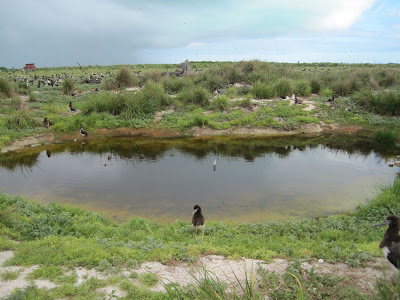For as long as she can remember, Mimi has loved animals. When she was less than 2 years old, she often sat on the floor next to her cocker-springer pet dog during mealtimes. At least once Mimi enjoyed sharing a bowl of kibble with her!
As Mimi grew older she learned more and more about all kinds of animals. For example, she learned to-–
- trim the claws and beaks of pet birds
- put the correct dose of medicine into an aquarium of sick fish
- understand the body language of her horse by sitting quietly on his back in a sunny field and watching other horses in the pasture.
From these experiences, Mimi decided that she’d like to work with animals when she grew up. She wanted to be a conservation scientist, to help endangered animals, but her teachers advised her to become a veterinarian. Vet school was haaaard! Mimi’s area of interest was zoo animals, so guess where she went to work when she graduated?...
…AFRICA! The African animals she worked with were serval cats, various antelope, and elephants; she also worked with the domestic cattle, goats and camels belonging to tribes people. Mimi ended up spending a year and a half in various countries in Africa. But when she began missing her family, she left Africa and returned to Kaua`i.
 Mimi now works for the state of Hawai`i as the Kaua`i Marine Mammal Response Specialist and volunteer coordinator for the Hawaiian Monk Seal project. And so, she has become what she always wanted to be…a conservation scientist helping a very rare and endangered seal! (That's a skull of a Monk Seal to the left of her laptop in the top picture.)
Mimi now works for the state of Hawai`i as the Kaua`i Marine Mammal Response Specialist and volunteer coordinator for the Hawaiian Monk Seal project. And so, she has become what she always wanted to be…a conservation scientist helping a very rare and endangered seal! (That's a skull of a Monk Seal to the left of her laptop in the top picture.)
 Mimi now works for the state of Hawai`i as the Kaua`i Marine Mammal Response Specialist and volunteer coordinator for the Hawaiian Monk Seal project. And so, she has become what she always wanted to be…a conservation scientist helping a very rare and endangered seal! (That's a skull of a Monk Seal to the left of her laptop in the top picture.)
Mimi now works for the state of Hawai`i as the Kaua`i Marine Mammal Response Specialist and volunteer coordinator for the Hawaiian Monk Seal project. And so, she has become what she always wanted to be…a conservation scientist helping a very rare and endangered seal! (That's a skull of a Monk Seal to the left of her laptop in the top picture.) I wonder what you'd like to be when you grow up?! You'll find something that fits you exactly right!





















































